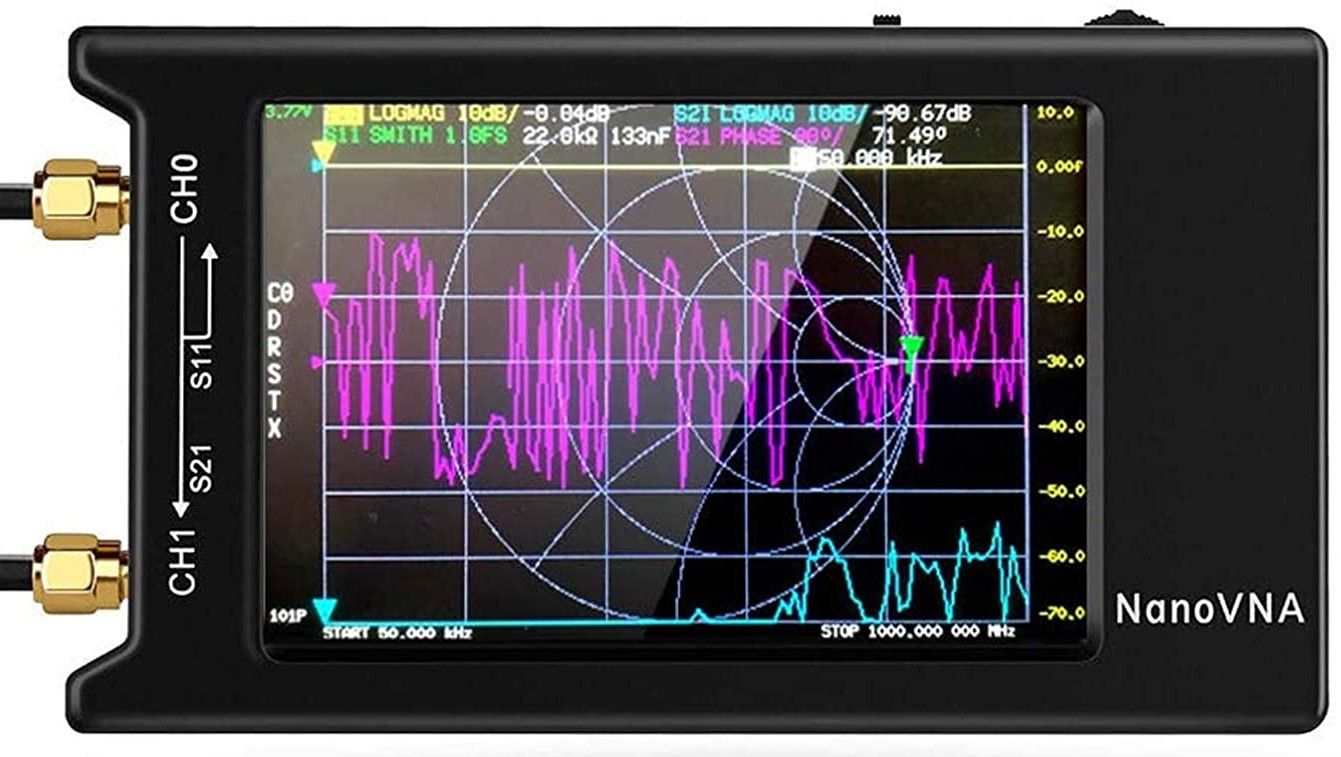Antenna Analysis
Just a few years ago analyzing an antenna system required expensive and complicated tools, the NanoVNA changed that.

A NanoVNA is both a blessing and a curse. I dig it out entirely too often to re-analyze all of my antennas after discovering some new way to do it, or some new analysis feature. None the less it's an excellent tool to analyze antennas, coax, filters, etc, and any ham who tinkers around should have one.
I have the model that has a 2.4" screen and is said to work up to 1.5GHz and has harmonics above 300MHz, vs the "V2" or "N2" models which go up to 3GHz and do not use harmonics for the higher ranges so their accuracy is better. The older model I have does just fine for my needs, just need to allow it time to do a bit more averaging on 70cm to get a good analysis.
At the desktop I primarily use NanoVNA Saver which is an excellent program for calibration, capturing data, and analyzing data as well as doing some more specialized calculations. However, I've also found that NanoVNA WebApp on my phone works excellently to capture data. I can certainly do some analysis of SWR and Return Loss charts on the phone (or on the NanoVNA itself for that matter!) but I prefer to get the data, send it over to the desktop via NextCloud and then analyze it further using NanoVNA Saver.
In a pinch, you can certainly use the NanoVNA just by itself standalone and it has pretty much everything built-in you'd need to analyze antennas but with the 2.4" screen it makes it a bit harder to see for me but I've tuned antenna matches directly off an antenna doing this a few times and it works great. I still prefer to have the data saved for analysis so I know the antenna system is doing what I expect as well as potentially comparing it to a future state of the antenna if I suspect any issues with it.
The coax that comes with the NanoVNA is usable, but not great. I pretty quickly got some quality RG316 pigtails for mine and make sure my other existing pigtails around the house were of good quality (one was not!). The calibration kit that comes with the NanoVNA was sufficient for my needs.
Speaking of calibration; I'm not going to attempt to explain it here as that's well documented in other places but make sure that you calibrate for the cabling/setup you're using. If you re-use the same setup without changing it you can store and recall the calibration, but if you change anything always recalibrate. I personally have a calibration for an HT antenna jig, a calibration for 2M right off the cable, calibration for 70CM right off the cable, and calibration for HF right off the cable. The separate 2M and 70CM calibrations aren't really necessary; I could calibrate 140MHz-460MHz and be done with it but it's nice on recall for it to set it to 140MHz-150MHz to see details better, especially if you're viewing a Smith Chart. There's no point looking at a smith chart outside of the design parameters of an antenna.
I have done an analysis of a bunch of antennas I own and while my antennas may not overlap with yours or your antenna might perform differently than mine, maybe my analysis of them will be of interest to someone. Everything listed here is what I own, sorry but I can't do any requests as I have more than enough HT antennas as it is. That said, I am seemingly always getting another one so as I do, I'll add it to the list.
